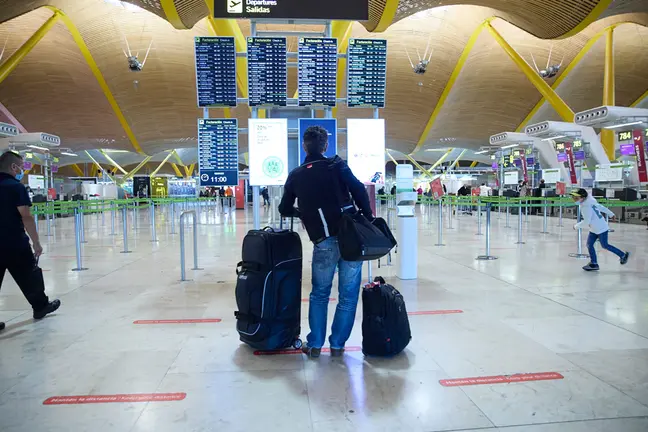Finland is preparing to extend the extraordinary measures implemented under the state of emergency to curb the coronavirus epidemic (koronavirus, in Finnish).
On 7 April, the Government adopted decisions concerning Finland’s internal and external borders. Based on the decisions, restrictions on border traffic and the quarantine rules will be tightened and continued until 13 May. The aim is to slow the spread of the coronavirus epidemic.
According to the Finnish Ministry of the Interior, essential travel to work and other necessary traffic will be allowed. But employees crossing the border must carry a certificate from their employer stating that the work is essential.
As a main rule, all persons arriving in Finland are obliged, regardless of the reason for the border crossing, to follow the instructions of the Finnish health authorities and to remain under quarantine-like conditions for 14 days. This quarantine requirement will not apply to essential border crossings of emergency medical service and rescue services personnel or to freight transport.
Freight transport drivers will be provided with instructions from the Finnish Institute for Health and Welfare (THL) on how to reduce the risk of infection and how to stay under quarantine-like conditions.
People working in border areas
Finns and Finland's residents working in the areas along the borders with Sweden and Norway must stay under quarantine-like conditions when they are in the territory of Finland. Under this condition, employees may continue to travel to work but they must comply with the quarantine instructions.
Employees coming to Finland from Sweden or Norway must follow the guidance on minimising the risk of infection and must stay in quarantine-like conditions, to the extent possible, both in Finland and during their stay at home.
On 1 April, the Ministry of Social Affairs and Health issued a decision to hospital districts to instruct staff arriving from abroad to remain under quarantine-like conditions for two weeks.
The Government recommends that shipping companies operating to Finland from Sweden, Estonia and Germany stop the sale of passenger tickets with the exception of goods and freight transport.
The Government is closely monitoring the development of the disease and is prepared to place further restrictions on border traffic if necessary, the Ministry of the Interior remarks.
Travelling abroad banned
The Government's earlier recommendation not to travel abroad will remain valid. All individuals arriving in Finland from abroad are required to fill in a form assessing their situation after border checks, and they will receive written instructions on further actions to take.
Quarantine-like conditions mean that the person entering the country must be at home, in a hotel or in other accommodation for 14 days without close contact with other people. They should not go to a grocery store or a pharmacy unless this is essential. Public transport must not be used. Outdoor activities are permitted, while avoiding close contacts, if the person's health so permits.
Employers are urged to explore ways to reduce the cross-border movement of workers, for example by accommodating workers near their place of employment. In addition, employers must ensure that employees are able to carry out their work while avoiding unnecessary close contacts and following THL's instructions on reducing the risk of infection.
Definition of necessary travel
At border crossing points with Estonia, Sweden and Norway, the necessary travel for work will be permitted, as is the case at present. For example, border crossings of personnel working in healthcare, elderly care and rescue services are considered essential travel.
Other necessary travel includes work that is important for the functioning of society or the security of supply and must be carried out without delay. In addition, crossing the borders will be permitted for employees who, based on a permanent employment contract, work in the areas along the borders with Sweden and Norway where travel for work is common.
Finnish Government says border control at internal borders and traffic restrictions have already produced results. Traffic volumes at the land borders between Finland and Sweden and between Finland and Norway have decreased from normal by around 95%. At the moment, about 80–90% of traffic is freight transport.












